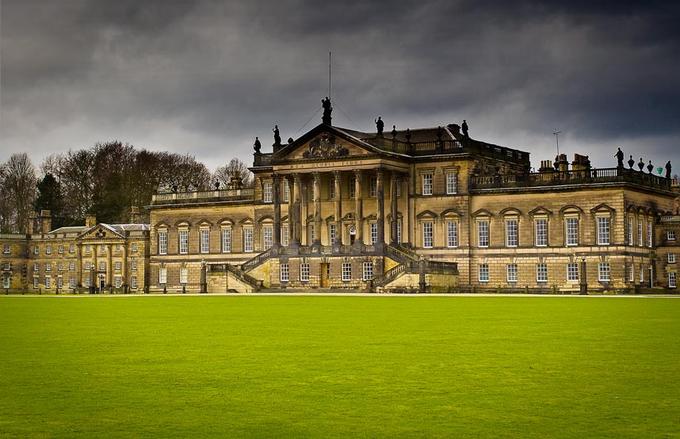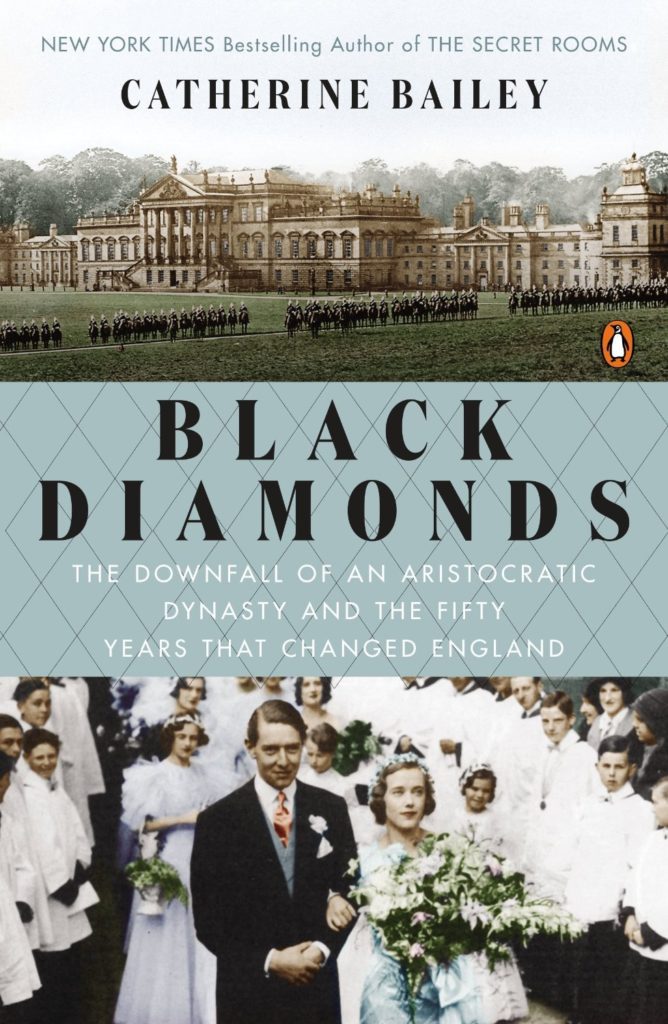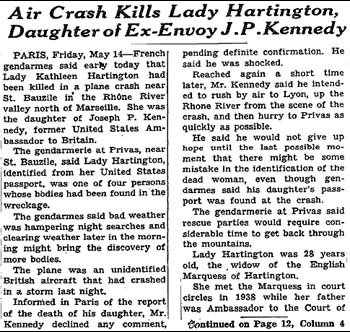Anyone with a penchant for the tension between the past traditions and the coming future (a la Lord Grantham in Downton Abbey) and historical nonfiction should pick up Black Diamonds. Catherine Bailey, author of The Secret Rooms, has once again scoured archives private and public looking for the missing links in noted family’s story. Posterity is all good and well — unless, of course, it exposes a unsavoury side of a ‘respectable’ family.
Bailey traces the Fitzwilliam dynasty, and the history of their massive manor Wentworth House, through the memories of the villagers, the occasional letter or diary entry and newspaper clippings. The author follows (mainly) the 7th and 8th earls of Wentworth House and the time to which they belonged.

The book begins when the earl dies, the last bastion of the Victorian era at Wentworth and, as many at the time did, speculates about the validity of new earl’s heritage (After all, he had been born is a remote outpost in the Canadian wilderness). Despite the rumblings that he was a changeling, at the time of his 1902 succession to the Earldom, he became one of the richest men in Britain, inheriting an estate of significant land, industrial and mineral-right holdings worth £3.3 billion in 2007 terms. But it was a new century not just on the calendar but it signified a new era in society and what being a member of the landed gentry meant.
The Fitzwilliam’s massive wealth was built upon the rich coal seams that ran throughout their properties. They both owned the land that was being mined and owned the collieries themselves. Entire towns of mine workers and their families grew up around the “pits”, as they were called. Their money was borne on the backs of men and boys who toiled in a dangerous and harsh environment. And the entire country relied upon coal. Heat, lighting, cooking, and more were dependent on it.
Strangely, these two worlds lived side-by-side. And Wentworth House survives the massive multiple mining strikes. The revolution taking place in the rest of the world only grazes the outskirts of the Fitzwilliam family.
It was a world away from the pit villages nearby, where the Earl’s miners stood up their family corpses in the corner of their front parlour rooms to make way for the crush of mourners, and where, in the overcrowded cottages, dead relatives frequently shared the family’s beds. As late as the 1920s, a boy from Gresbrough, one of the Fitzwilliams’ villages, told his teacher, “Please, Miss, they’re goin’ ter bury our Ernest tomorrow., he’s in t’ big bed in t’room now. Our Jimmy wouldn’t sleep wi’ him last night – ‘e wor frightened.” ~Pg. 6
The 8th earl did a great deal to maintain the good will between the estate and its workers, but it was only a matter of time before the modern era crept in. His title became more and more honorary and there was less he could do to affect his estate. Strained by the second World War, his marriage was failing and he was without an heir.
Then along came Kathleen “Kick” Kennedy. She had already married one duke-in-waiting. She and the heir apparent to be Duke of Devonshire, master of Chatsworth House, were married only a few weeks when he was killed by a sniper. She retained her title as Lady Hartington but the dukedom would never be theirs. She took up with Peter Fitzwilliam. Though still married, he was on the brink of divorce and she was a young, spunky widow. The two had flown to Paris to seek the approval of her father (an ambassador) when they too were killed.
And these are just a handful of the scandals, secrets and misdeeds uncovered by the book. At times, the narrative seems to wander a bit too much, but at the same time there is so much to explore, it’s hard to blame her. And occasionally Bailey makes a bit too much out of missing documents and letters. Her frustration at their destruction is palpable and understandable, but the reader is not always sure why she is focused on it quite heavily, and for so many pages.
Wentworth House still stands, albeit much changed.
At night, the view over the surrounding country stretches for miles. To the south, the hills above Sheffield are coloured by a livid orange glad; the south-west, Rotherham and Rawmarsh blaze, a sodium-lit sprawl; the M1 marches along its western edge. But like totality in a solar eclipse, in the midst of this, one of England’s greatest urban conurbations, there is a vast expanse of black. Startling in its size and density, it conceals woodland, fields and parkland. It is the land once encompassed by the nine-mile perimeter that encircled Wentworth House. ~Pg 451
The irony is that Wentworth House now is on a precipice brought about by its own doing. It was built by coal and is now endangered by the greed it engenders.
Many thanks to the folks at Penguin for the review copy.
_________________
Paperback: 544 pages
Publisher: Penguin Books (December 30, 2014)
Language: English
ISBN-10: 0143126849
ISBN-13: 978-0143126843
Product Dimensions: 5.6 x 1.2 x 8.5 inches


